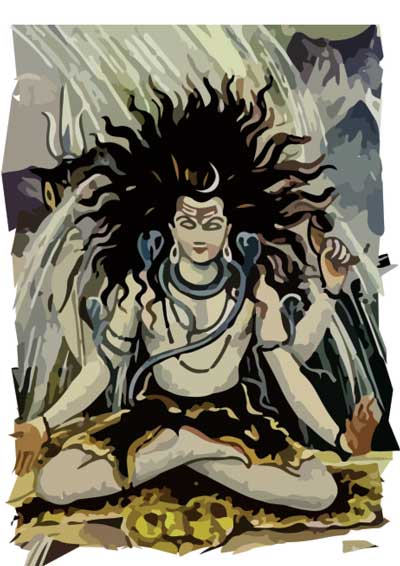
Whatever period of history are welcomed to membership. The scope of the Society's purpose is not limitedīy temporal boundaries: All sincere students of man and his works in Asia, at
Shiva sama veda full#
Full text of Bhagavad Gita, Rig Veda, Sama Veda, Yajur Veda, Atharva Veda. Include such subjects as philology, literary criticism, textual criticism, paleography,Įpigraphy, linguistics, biography, archaeology, and the history of the intellectualĪnd imaginative aspects of Oriental civilizations, especially of philosophy, Bhajans of Krishna, Shiva, Rama, Ganesha, Saibaba, Devi, Hanuman updated daily. Of Asia has always been central in its tradition. The encouragement of basic research in the languages and literatures From the beginning its aims haveīeen humanistic. Philosophical Society (1743), the American Academy of Arts and Sciences (1780),Īnd the American Antiquarian Society (1812). Preceded only by such distinguished organizations of general scope as the American The American Oriental Society is the oldest learned society in the United Statesĭevoted to a particular field of scholarship. Membership in the AOS includes an annual subscription to the Journal. To assure competent and impartial appraisal of the scholarly level of the material submitted for publication, the editorial staff is composed of recognized scholars in each of the major areas served by the Society.

The pages of the Journal are always open to original and interesting contributions from scholars. From that year to the present day, the Journal has brought to the world of scholarship the results of the advanced researches of the most distinguished American Orientalists, specialists in the literatures and civilizations of the Near East, North Africa, South and Southeast Asia, Inner Asia, the Far East and the Islamic World. Du Ponceau, assailing the doctrine of the "ideographic" character of the Chinese script. It included studies of Arab music, of Persian cuneiform, and of Buddhism in India, and brought to a wide audience the then novel theories of Pierre E. The first volume, published in 1843-49, set the tone for all time in the broad scope of subject matter and the solidity of its scholarship.

Shiva sama veda serial#
The content of the Atharvaveda was classified under medicinal, philosophical, socio-cultural, royal and hymns used for black magic, The etymology, chronology and the inclusion of the Atharvaveda in Vedic literature were the other topics discussed.The regular serial publication of the Society, issued quarterly, is the Journal of the American Oriental Society.

The session dealt with the various names of the Atharvaveda and their significance. OLA-IKS session 15 (21 May) on the Atharvaveda. The class also described the various musical instruments that are mentioned in the Sama Veda. The differentiation between Krishna Yajur Veda and Shukla Yajur Veda was also further discussed. Explaining the etymology of Yajna and Sama, the speaker took the participants through the tradition and rules of yajna. While Yajurveda elucidates ritualistic practices and different yajnas like the Ashwamedha Yajna, the Sama Veda showcases the foundations of musicology as it presents musically rendered chants. Mahulikar described the objectives and purpose of the mantras in the respective Vedas.

OLA-IKS session 14 (14 May) on Yajurveda and Samaveda. Stories of Shiva and Parvathi, especially in folk literature were also narrated. The class described the rituals and mantras offered to Rudra and Shiva. The story of Linga worship of Shiva was also discussed. Similar to Ekadasha Rudras the many other expressions of Shiva such as Eka murti Shiva, Trimurthi Shiva, Ashtamurthi Shiva and so on were explained. See also GURU PADUKAS SHAKTI SHIVA, LORD. These descriptions bring Rudra closer to Puranic Shiva. An aspect of Lord Shiva as the Guru and bestower of knowledge (jana). The epithets of Rudra in the Rigveda and Samaveda describe him as Ugra, Neelakantha, Mahadeva and so on. Rudra in the Vedic times is the stormy wind, who is fiery and makes a loud sound. The speaker took the audience through the images of Rudra and Shiva and gave an overview of Rudra and Shiva in folk literature and tradition. OLA-IKS session 13 (7 May) on Vedic Rudra and Puranic Shiva.


 0 kommentar(er)
0 kommentar(er)
